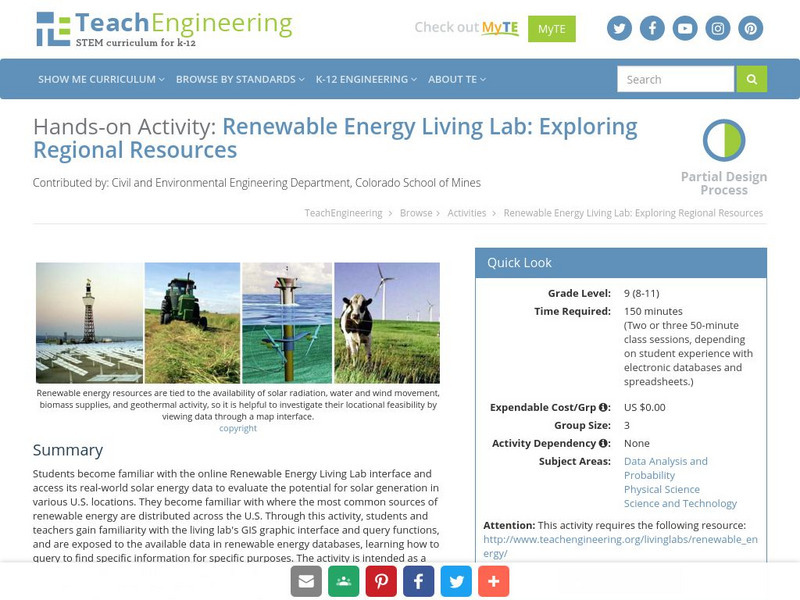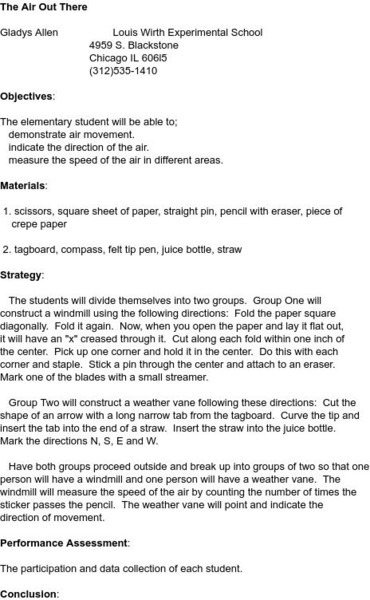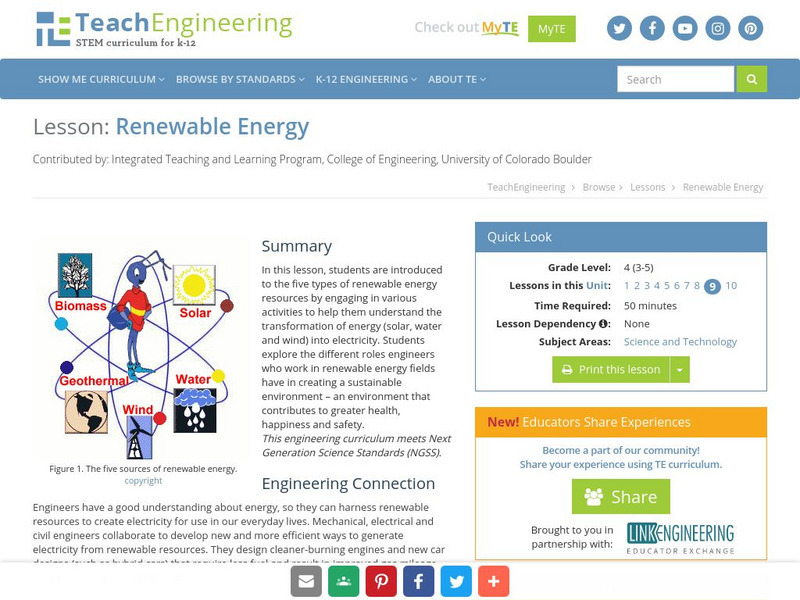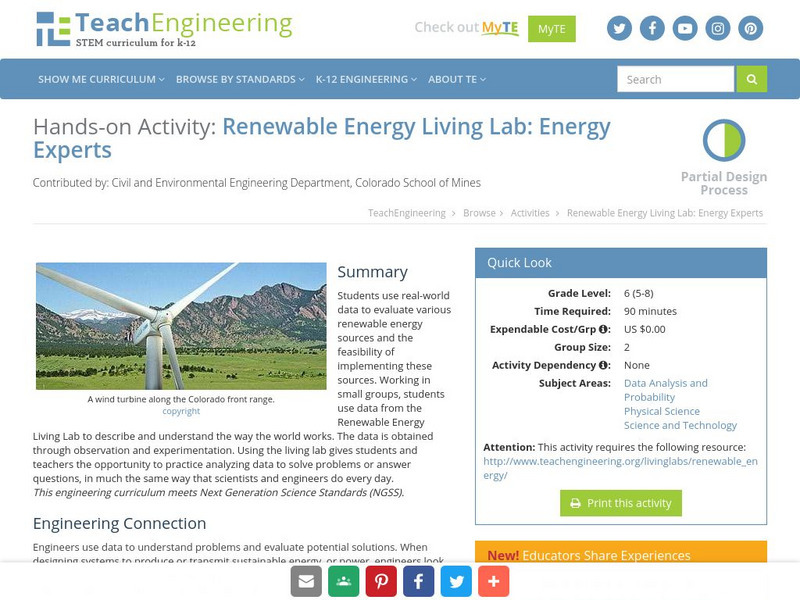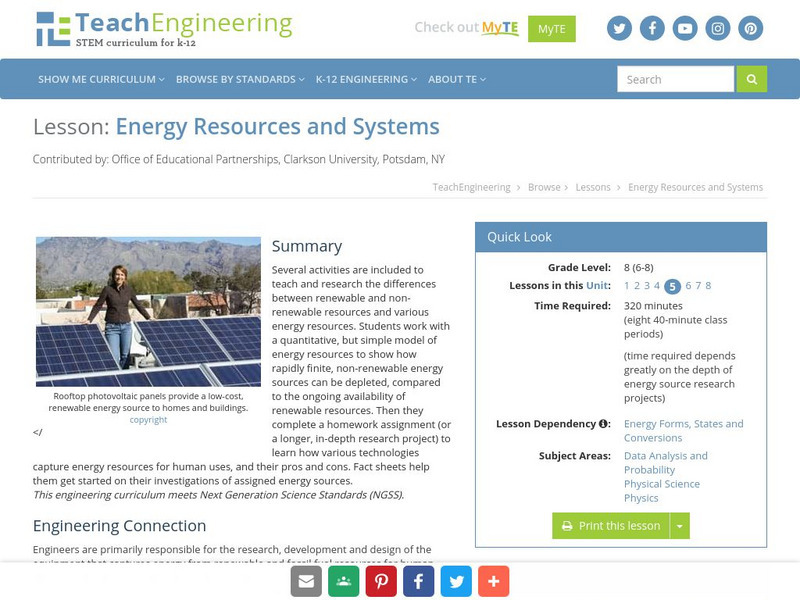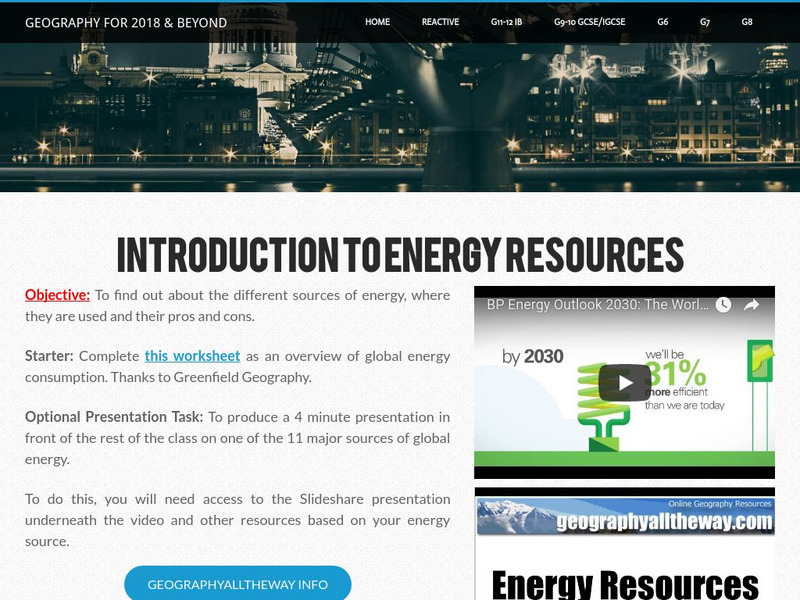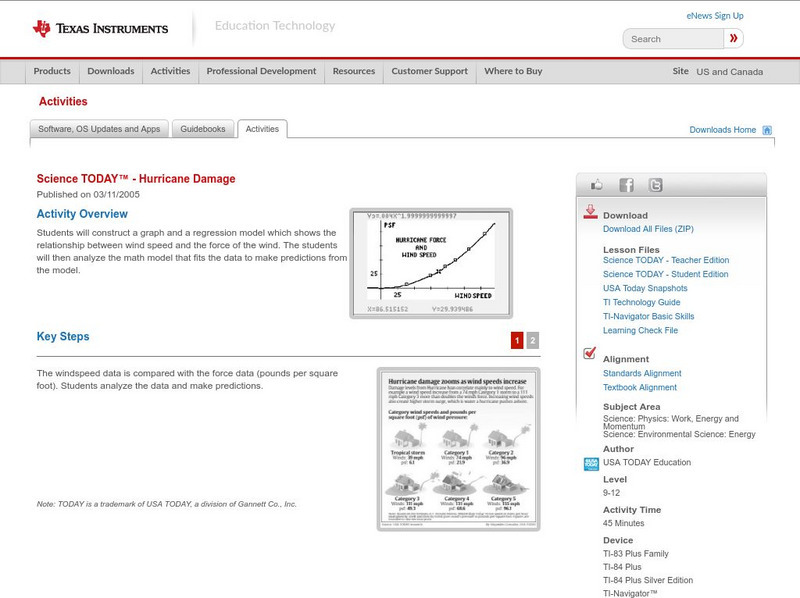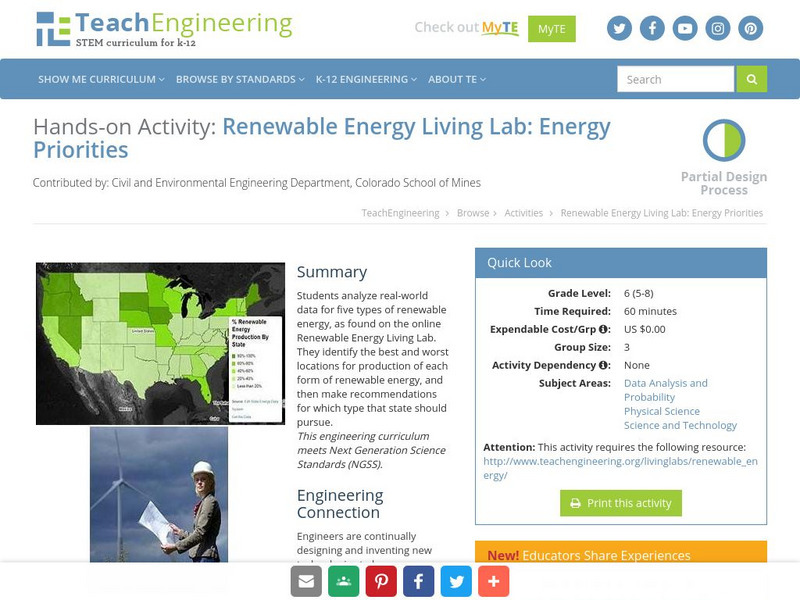Hi, what do you want to do?
TeachEngineering
Teach Engineering: Renewable Energy Living Lab
Students become familiar with the online Renewable Energy Living Lab interface and access its real-world solar energy data to evaluate the potential for solar generation in various U.S. locations. They become familiar with where the most...
TeachEngineering
Teach Engineering: Build an Anemometer
Students create their own anemometers which are instruments for measuring wind speed. They see how an anemometer measures wind speed by taking measurements at various school locations. They also learn about different types of...
Weather Wiz Kids
Weather Wiz Kids: Wind
What is wind? How is it caused? This site offers simple answers to many common questions about wind as well as a chart of the Beaufort scale, which "is an empirical measure for the intensity of the weather based mainly on wind power."
Other
Bsi Education: Alternative Energy
The Applied Science resource consists of practical activities that demonstrate the importance of standard procedures in scientific work. Students examine alternative energy through a variety of activities. Some topics investigated are...
Science and Mathematics Initiative for Learning Enhancement (SMILE)
Smile: The Air Out There
Cooperative learning activity in which students will create a windmill and a weather vane. Students will find the direction of wind and the speed relative to the spinning windmill. Great for K-2.
TeachEngineering
Teach Engineering: Renewable Energy
In this instructional activity, learners are introduced to the types of renewable energy resources. They are involved in activities to help them understand the transformation of energy (solar, water and wind) into electricity. Students...
Other
California Energy Commission: Science Projects
A number of electrical, nuclear, solar, and wind science projects and energy activities are described on this page, with links to each activity.
TeachEngineering
Teach Engineering: Renewable Energy Living Lab: Energy Experts
Students use real-world data to evaluate various renewable energy sources and the feasibility of implementing these sources. Working in small groups, students use data from the Renewable Energy Living Lab to describe and understand the...
TeachEngineering
Teach Engineering: Energy Resources and Systems
Several activities are included to teach and research the differences between renewable and non-renewable resources and various energy resources. Young scholars work with a quantitative, but simple model of energy resources to show how...
Geographypods
Geographypods: Theme 3: Economic Development: Energy Systems
This learning module looks at human-made systems of energy, covering different types of energy and power stations. Includes handouts, slideshows, maps, activities, photographs, an interactive animation, and videos.
TeachEngineering
Teach Engineering: The Universal Language of Engineering Drawings
Students practice the ability to produce clear, complete, accurate and detailed design drawings through an engineering design challenge. Using only the specified materials, teams are challenged to draw a design for a wind-powered car....
Science Museum of Minnesota
Science Museum of Minnesota: From Windmills to Whirligigs
This folk artist uses the power of the wind to animate his whimsical kinetic sculptures. Check out his decorated yard and try some of the activities inspired by his creations.
Texas Instruments
Texas Instruments: Science Today Hurricane Damage
Students will construct a graph and a regression model which shows the relationship between wind speed and the force of the wind. The students will analyze the math model that fits the data to make predictions from the model.
Science Education Resource Center at Carleton College
Serc: Alternative Energy Debate
With a learning team, students choose an alternative energy source such as solar, wind, biofuel, geothermal or other form and research the pros and cons of that energy type. The team then splits into debate teams and draws straws to...
National Institute of Educational Technologies and Teacher Training (Spain)
Ministerio De Educacion: Agentes Geologicos I
What do you know about external geological agents? What are they? How do they work? Where do they work? What effect do they have? You will find the answers to these questions in this unit which has 15 interactive activities.
Other
Abc Da Energia
ABC Da Energia describes the many ways that energy can be obtained and conserved. It explains different sources of energy, how each works, and how energy can be saved in our daily lives. Interactive energy-saving activities and games...
Other
First Energy: The Electric Avenue: Energy Fun Factory
Here, students can learn all about energy sources and electricity. Activities include games and calculating energy costs in their homes.
TeachEngineering
Teach Engineering: Rolling Blackouts & Environmental Impact
The goal is for the students to understand the environmental design considerations required when generating electricity. The electric power that we use every day at home and work is generated by a variety of power plants. Power plants...
TeachEngineering
Teach Engineering: Renewable Energy Living Lab: Energy Priorities
Students analyze real-world data for five types of renewable energy, as found on the online Renewable Energy Living Lab. They identify the best and worst locations for production of each form of renewable energy, and then make...
TeachEngineering
Teach Engineering: Environment
Through 10 lessons and more than 20 hands-on activities, students are introduced to the concept of an environment and the many interactions within it. As they learn about natural and human-made environments, as well as renewable and...
TeachEngineering
Teach Engineering: Energy Sources Research
Fact sheets are provided for several different energy resources as a starting point for students to conduct literature research on the way these systems work and their various pros and cons. Students complete a worksheet for homework or...
TeachEngineering
Teach Engineering: Energy Systems
Posters are provided for several different energy conversion systems. Students are provided with cards that give the name and a description of each of the components in an energy system. They match these with the figures on the diagram....
TeachEngineering
Teach Engineering: Design a Net Zero Energy Classroom
Students create a concept design of their very own net-zero energy classroom by pasting renewable energy and energy-efficiency items into and around a pretend classroom on a sheet of paper. They learn how these items (such as solar...





